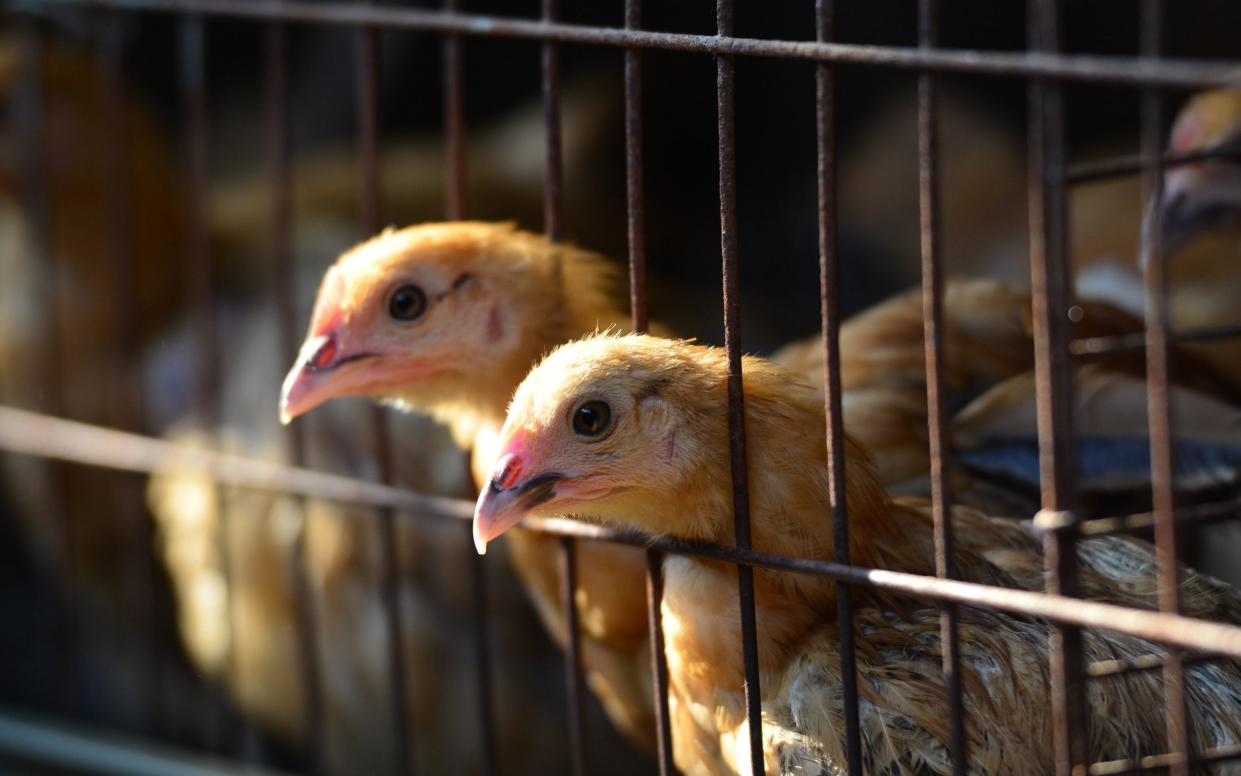Warning over bird flu in humans as two ‘critical’ cases emerge in China

Two new human cases of bird flu have been detected in China, amid a spike in infections across the globe which has triggered calls for heightened surveillance.
In a statement this week, the Hong Kong Health department said two people in mainland China are in a “critical condition” in hospital after contracting H5N6 avian influenza.
Although the virus mainly affects birds it occasionally jumps to humans, especially those in close contact with poultry, and the death rate is as high as 50 per cent.
The latest cases – in a 68-year-old man and 55-year-old woman – were detected in Sichuan and Zhejiang provinces, in cities which are more than 1,000 miles apart. Both infections occurred earlier this month but have only just been made public by health officials.
Authorities said it is not yet clear how the man, who fell ill on January 3, became infected, but the woman developed symptoms on January 6 after being exposed to slaughtered poultry.
H5N6 was first detected in people in 2014, and since then 67 cases have been detected – all but one in China. However, the rate appears to be rising: more than half of human infections have been reported in the last six months, including four so far this year.
“It’s a bad year for avian flu generally, [but it’s] not really clear why,” Ian Jones, a professor of virology at the University of Reading, told The Telegraph. He said the rise in H5N6 “might signify a change that makes it more infectious for people”, although stressed he has not yet seen any evidence of human to human transmission.
“So it seems to be classic bird flu in that regard, not a harbinger of anything worse,” he said. “But it does need watching.”
Dr John McCauley, director of the Worldwide Influenza Centre at the Francis Crick Institute, added that the China Centers for Disease Control put the rise down to increased detection.
“I am not overly alarmed by the numbers of human H5N6 cases in China, but they are a concern,” he told The Telegraph. “The numbers are nowhere near what was seen in 2013-2017, with H7N9 human infections. To me that was a big threat, which was controlled in the end.”
China’s latest cases come amid a global surge of infections in poultry and wild birds, with those who work closely with poultry told to remain vigilant and take steps to minimise the risk of transmission – both within flocks, and to themselves.
The World Organisation for Animal Health (or OIE) said it has seen a significant increase in reports with various subtypes – including H5N1, H5N6 and H5N8 – found in well over 40 countries.
All influenza strains are classified with an H and N number, which refer to changes in the virus that might affect the immune response. But the fact that so many variants are spreading simultaneously could be a breeding ground for new, potentially dangerous, shifts in the virus, the OIE said.
“The co-circulation of different H5 strains in various bird populations is favourable
to further genetic evolution of the virus, making the surveillance of the disease more complex,” a spokesperson told The Telegraph.
“In light of this, and the coming months being the high-risk period for avian influenza, it is likely that more outbreaks in birds will occur. The spread of the disease usually follows a seasonal trend, rising in October, with peaks in February and continuing through April.”
In the UK, at least half a million birds were culled last year as the country saw a surge of H5N1. Earlier this month, Britain’s first human H5N1 case was detected, in a 79-year-old man – Alan Gosling – who kept ducks at his home in Devon.
Although the global influenza surveillance system is well established, experts said the situation in China demonstrates the need to keep watch for pathogens with a pandemic potential – and to put plans in place in case of a worst-case scenario.
“We do have vaccines that can be readied if they are needed, but manufacture would take time,” said Jonathan Ball, a professor of virology at the University of Nottingham. “We also have effective antivirals that can be used to treat any infections if necessary. With flu, we are in a far better position than we were when the totally new coronavirus reared its head.
“So, we should keep monitoring the situation – we have very good flu surveillance systems around the world – and ensure that outbreaks are controlled so we don't give the virus a chance to take hold.”
A spokesperson from the World Health Organization added: “Whenever avian influenza viruses are circulating in poultry, there is a risk for sporadic infection and small clusters of human cases due to exposure to infected poultry or contaminated environments. Therefore, sporadic human cases are not unexpected.
“WHO recommends Member States to remain vigilant and consider mitigation steps to reduce human exposure to potentially infected birds to reduce risk of additional zoonotic infection.”
Protect yourself and your family by learning more about Global Health Security

 Yahoo News
Yahoo News 
